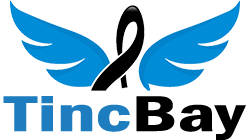As we move further into the 21st century, the landscape of education is changing rapidly. With the advancement of technology and the changing needs of society. Hence, there is an urgent need to reimagine the way we educate our students. This case study explores a school that has taken on this challenge, implementing innovative teaching strategies. In addition, technologies create a modern and engaging learning environment.
By examining the successes and challenges faced by this school, we can gain valuable insights into how we can reimagine education to better prepare our students for the demands of the 21st century.
The Way Forward
It is now more important than ever to reimagine education for the 21st century. The way forward is to reimagine education for the 21st century by offering students a chance to learn without paying tuition or professional academic help. This can be accomplished through a combination of online programs that provide access to high-quality content and instructors using interactive technology, such as video lectures and simulations, in their classrooms which give professional academic help.
The goal here isn’t just about replacing traditional learning experiences with new ones; it’s also about expanding what we think of as “learning” itself and doing so in ways that are more relevant today than they were 50 years ago.
Learning and Pedagogy
Learning and pedagogy are at the heart of education. It’s not just about teaching things, it’s also about how you teach them: what kind of student you want professional academic help, how much time your students spend on each subject and how much autonomy they have in deciding their own learning path.
Use of Technology in the Education System
Technology has become an integral part of education, transforming the way students learn and teachers teach. Here are some ways in which technology is used in education:
Online Learning Platforms:
Online learning platforms like Coursera, edX, Udemy, and Khan Academy provide students with access to a wide range of courses from leading universities and institutions around the world.
Digital Learning Tools:
There are numerous digital learning tools available to provide professional academic help to students learn, including educational apps, e-books, and online simulations.
Interactive Whiteboards:
Interactive whiteboards, also known as smartboards, allow teachers to present their lessons in a dynamic and interactive way, making learning more engaging and effective.
Virtual and Augmented Reality:
Virtual and augmented reality technologies provide students with immersive learning experiences, allowing them to explore places and concepts that would otherwise be difficult to access.
Learning Management Systems:
Learning management systems (LMS) like Blackboard, Canvas, and Moodle provide a centralized platform for teachers to manage their courses, assignments, and assessments. Students can access learning materials and communicate with their peers and instructors.
Video Conferencing:
Firstly, video conferencing tools like Zoom and Google Meet have become essential for remote learning. They allow teachers to conduct classes and students to attend from anywhere with an internet connection.
Overall, technology has revolutionized education, making it more accessible, engaging, and effective for students of all ages and backgrounds so they will get professional academic help.
Teachers Training For Modern Education System
Firstly, Teacher training is an essential aspect of modern education, as technology continues to transform the way teachers teach. Teachers need to be equipped with the necessary skills and knowledge to integrate technology effectively into their classrooms and deliver engaging lessons.
Secondly, teacher training programs should focus on developing digital literacy, technology integration, and pedagogical practices that align with modern learning methods. Professional development opportunities such as workshops, conferences, and online courses can help teachers stay up-to-date with the latest educational technology and best practices.
Lastly, with adequate training and support, teachers can effectively utilize technology to enhance student learning outcomes. In addition, to prepare students for success.
Building Critical Thinking Skills
Building critical thinking skills is crucial for student success in today’s world. Here are some ways to develop critical thinking skills in students:
Encourage Questioning:
Encourage students to ask questions and seek answers. This helps them develop the habit of questioning assumptions and evaluating information critically.
Analyze and Evaluate Information:
Teach students to analyze and evaluate information using different sources and perspectives. This helps them develop a deeper understanding of the subject matter.
Problem-Solving Activities:
Engage students in problem-solving activities that require them to think critically and creatively to find solutions to complex problems.
Debates and Discussions:
Encourage debates and discussions in the classroom, allowing students to consider different viewpoints and develop their perspectives.
Reflection:
Firstly, Teachers should encourage students to reflect on their own thought processes and evaluate their own assumptions and biases.
Collaborative Learning:
Simultaneously, collaborative learning activities can help students develop critical thinking skills by working together to solve problems and evaluate information.
Overall, critical thinking skills are essential for success in academic and professional settings. By fostering an environment that encourages questioning, analysis, and evaluation, educators can help students develop critical thinking skills.

























